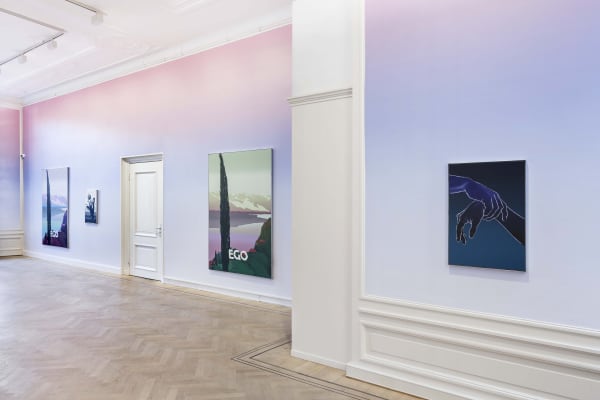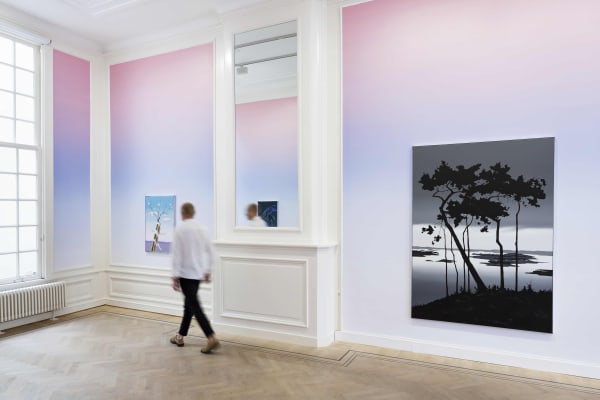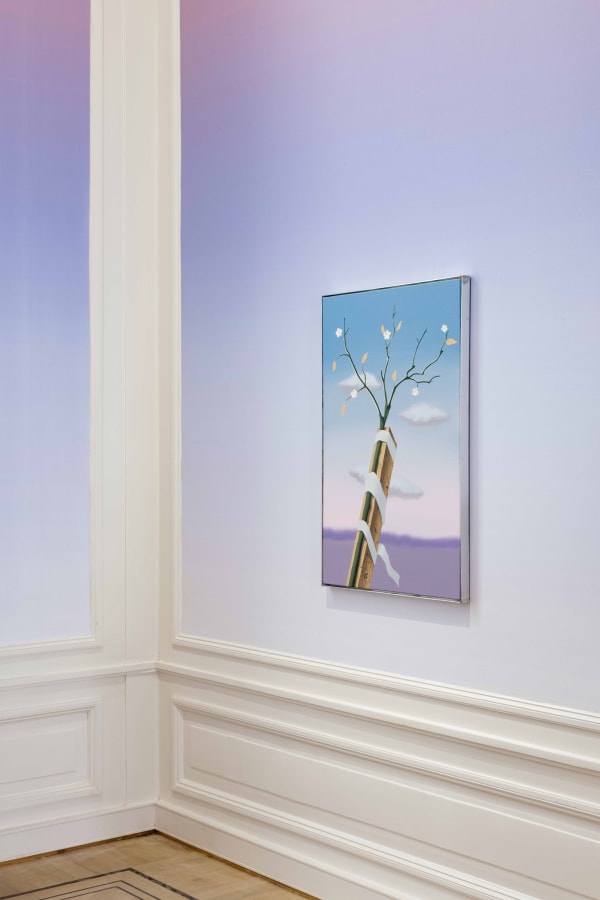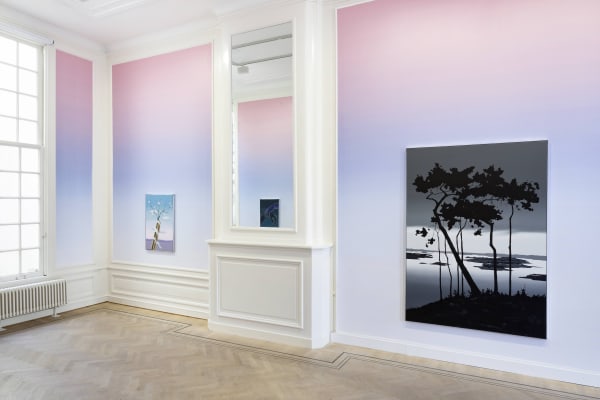Alex Dordoy: Summers' Ego
GRIMM is pleased to announce Summers' Ego, an exhibition of new paintings by Alex Dordoy at our Keizersgracht location in Amsterdam. This is the artist’s third solo exhibition with the gallery and his fifth solo presentation in Amsterdam.
Alex Dordoy creates images that question the mechanisms of visual attraction. The artist uses advertisements from the 1920s and 1930s as source material which he strips down and re-contextualizes through the manipulation of pictures and text. The romanticism of the images he chooses is contrasted by the vibrant, unnatural colors he gives his subject matter. An aura of romanticism and nostalgia delicately persists, underpinned by the painter’s precise, graphic rendering.
The way we experience time and how it is represented are carefully considered in this body of work. Dordoy strives to create an awareness of passing time in the Ego paintings using variations of hues that suggest changing seasons or liminal times of day. What’s more, appropriated materials are reworked so that the resulting pictures disassociate from any particular era. By emptying the works of ‘natural’ signifiers of time they exist apart from our normal experience, as if they are trapped in an eternal moment.
Dordoy has suggested that his paintings represent iterations of a singular concept, or rather, they are one painting that he has expanded across different canvases. There is a deliberate absence in the spaces depicted that demands the viewer’s attention. Confronted with his expansive landscapes, it seems as though one could step into their vast color fields. This is translated into a starkness that surrounds the forms within smaller works and which also beckons our external subjectivity.
In the Ego colorways, the text stands in for the human form, whereas in the smaller works, images can easily stand in for a phrase or word. In the former the word Ego, lodged in the landscape, binds with the vista in a way that feels consequential yet open to interpretation. The Helper and Europe(s) both contain specific symbolism that speaks to a humanist lineage tinged with the surreal.










